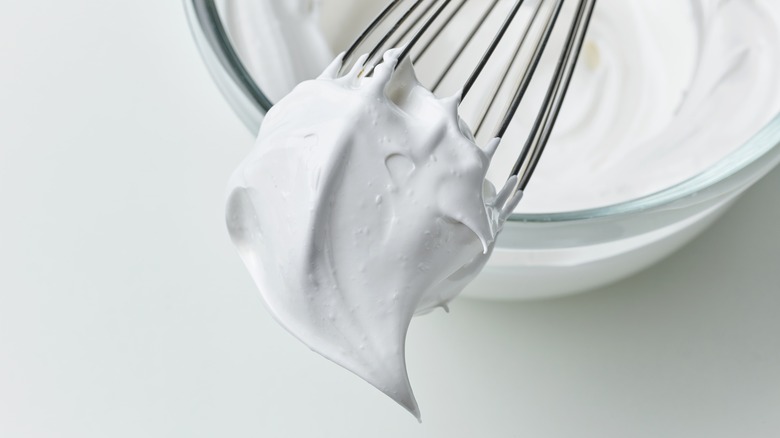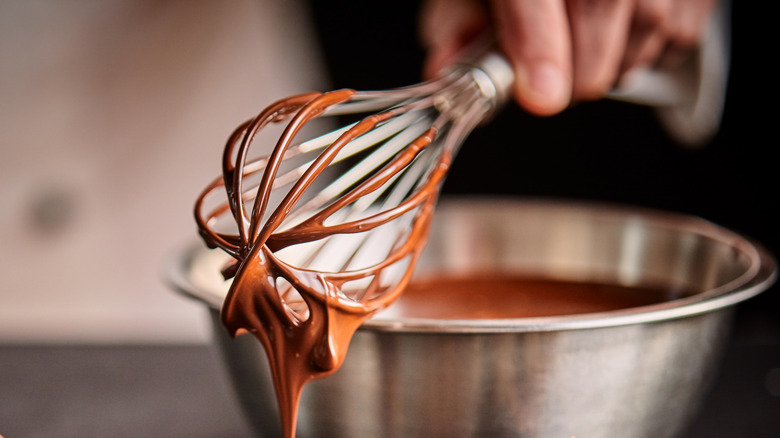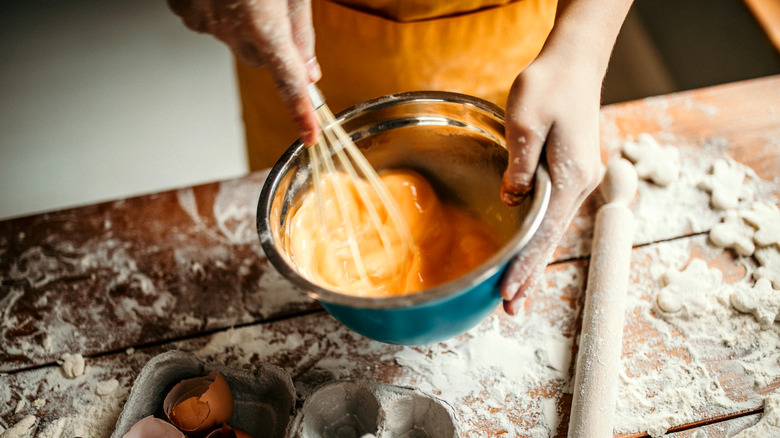Before Whisks, We Used Branches To Make Fluffy Whipped Cream
There are an endless number of kitchen innovations that modern chefs take for granted. For instance, something as seemingly simple as packaged yeast has only been around for about 200 years. That's basically the blink of an eye for the greater timeline of human cooking and eating. And one of the more surprising recent innovations is the whisk.
Yes, the whisk — that tangle of wires attached to a handle — seems like an obvious invention, but it only first appeared in the 1800s. Up until that time, bakers were forced to use twigs and branches to fluff up whipped cream or egg whites.
Recipes would specifically call for the use of willow branches or birch rods taken from trees to do the hard work of agitating cream into the wonderfully fluffy topping we all know and love. Anyone that's ever tried to whip cream by hand knows how challenging that can be with a whisk. It's hard to imagine how difficult it would be to use a willow branch instead, but it beats using just your hands alone. The true wonder, though, is that folks didn't discover the simple trick of shaking cream in a jar earlier.
The invention of the wire whisk
As metal utensils started to become more common and accessible around the globe, the French came along to replace those branches. The first wire whisks were created in France sometime during the mid-19th century. They quickly caught on but were even more quickly replaced. The first mechanical whisks were invented around 1855 and soon became the more preferred tool. These whisks used stiff metal stirrers that could be rotated at high speeds thanks to a mechanical crank, and they were sometimes referred to as "egg beaters."
The wire whisk would then come back into vogue thanks to the queen of cooking: Julia Child. She appeared on a TV program in 1963 to promote her book, "Mastering the Art of French Cooking," and her whisking knowledge drove audiences wild. She used a simple balloon whisk to whip up egg whites on air, and viewers were so impressed by the technique and expertise that dozens wrote in requesting more of Child. Like her, the humble whisk then quickly became a household name.
Proper whisking form
Today, most home kitchens aren't complete without at least one whisk. There are dozens of different whisking styles out there to choose from, and it helps to pick the right type of whisk for every dish, so it's probably more than one on average. Having the right whisk isn't all that matters, though; you have to use it correctly, too. Most of us have been using whisks totally wrong, but there's a simple change that will cut your whisking time in half.
The best method to use with a standard whisk is the side-to-side method. While it might feel more intuitive to stir your whisk around the bowl in circles, it won't create as much force as working the whisk back and forth across the center of the bowl will.
This method is the most effective way to whisk whipped cream or egg whites because it creates the most shear force. As explained by Cook's Illustrated, this is because, "as the whisk moves in one direction across the bowl, the liquid starts to move with it. But then the whisk is dragged in the opposite direction, exerting force against the rest of the liquid still moving toward it." When those two forces collide, they agitate the liquid. Using this method may feel strange at first, but it creates the best results every time.


